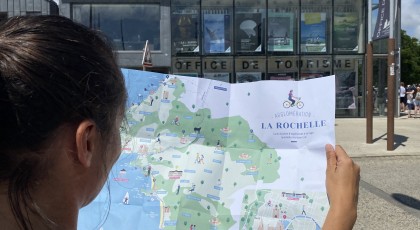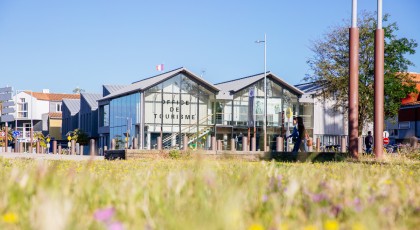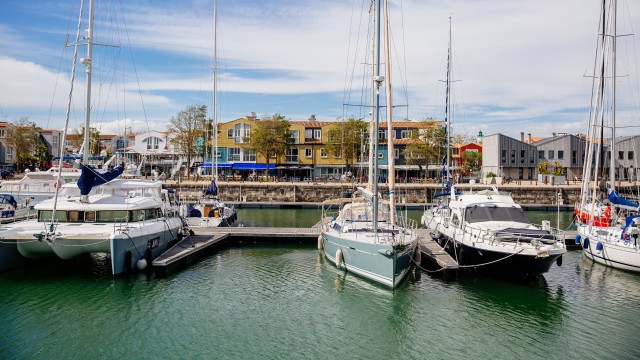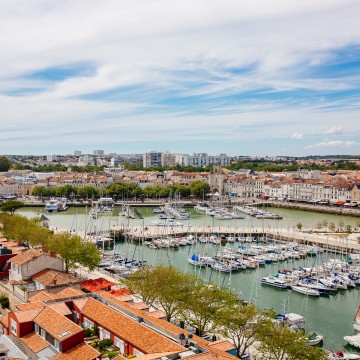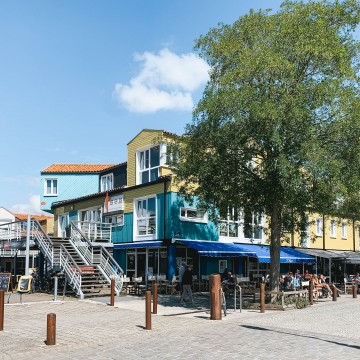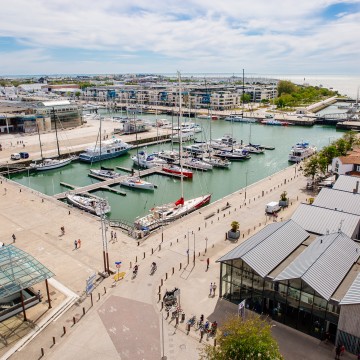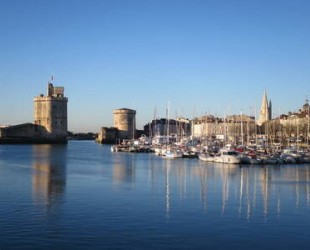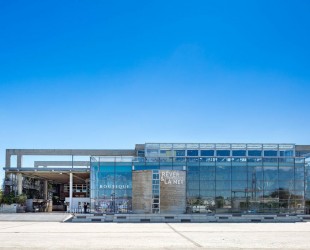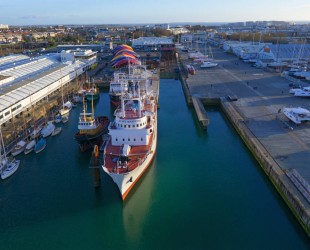At the foot of Saint-Nicolas Tower, between the old port’s wet dock and the great yachts’ wet dock, lies Le Gabut with its colourful houses. The district of La Ville en Bois connects the old city centre and the new Quartier des Minimes.
A district surrounded by the sea
With its bright-coloured wooden houses painted in yellow, blue or red, Le Gabut has a central place in the town of La Rochelle. A former fishing district, it was entirely rehabilitated and is now a lively tourist spot.
Le Gabut is built on several levels which are connected using footbridges, and includes accommodations, offices, as well as shops, cafés and restaurants with terraces overlooking the sea. This is where the Tourist Office is located, facing Place de la Motte Rouge and only a few steps away from Aquarium La Rochelle.
Quai du Gabut
The Quai du Gabut is located near the old port and features a large number of café and restaurant terraces overlooking the wet dock’s sailing boats. It can be accessed from Quai Valin or by taking the rotating footbridge at the end of Quai du Carénage. You can come here for a little peace and quiet in the shade of the trees bordering the wet dock.
Quai Georges Simenon
Quai Georges Simenon, which faces south, offers a pleasant view over the great yachts’ wet dock and the trawlers’ wet dock. From here, one can admire the frigates and tall ships frequently stopping in La Rochelle, such as Hermione and Belém. At the end of the quay, take the Gabut lift bridge to get to the media library or the sea bus.
Where can you go for a drink in Le Gabut?
Whether you’re walking along Quai du Gabut or along Quai Georges Simenon, strolling on café terraces in this lively maritime district is very pleasant. In the evening, students like to meet up in animated bars nested at the heart of a labyrinth of coloured houses, a few steps away from Saint-Nicolas district.
What is worth visiting in Le Gabut district?
The graffiti den in the “Friche du Gabut”
If you’re fond of urban art, go to the end of Le Gabut district between Saint-Nicolas Tower and the lift bridge. In this disused area, at the corner of Quai Simenon and Rue de l’Archimède, are the workshops and warehouses of the old shipyard, which are now abandoned. These have become the perfect setting for wall frescoes and graffiti depicting the street art movement.
A true space for urban art expression, the Friche du Gabut has become a creative, popular open space. It was also a third location for the set up of an open-air guinguette called “La Belle du Gabut” during three summers, as well as the scene of the Roscella Bay Festival of electronic music.
The Friche du Gabut is currently the subject of a citizens’ consultation in order to co-build a new project rehabilitating this part of the district.

Guided tour -Streeart Balades
A little history about Le Gabut
Before being the district we now know, Le Gabut referred to the wall marking the south limit of the medieval rampart in La Rochelle. In 1568, a bastion fort was added, “le Gabut” (from the Italian gabbione) which gave its name to the wall, and then to the district.
During the 17th century, quays, houses, shops and an armoury were built there. 1808 saw the inauguration of the wet dock built to make it easier to moor boats without being subject to tides.
With the arrival of the railway in La Rochelle in 1857, interactions between the station, the town and the port warehouses multiplied. A door was installed in the wall before it was finally demolished in 1887.
Throughout the 20th century, Le Gabut remained a port district occupied by the “Lockmaster’s house”, which was intended to accommodate port workers, and by craft businesses and commercial businesses. At the end of the 1980s, the workshops and yards evacuated following the decommissioning of dependencies from the Maritime Public Domain.
Works in Le Gabut started in January 1989. The district then took on Scandinavian airs with Danish group Thorsen building coloured wooden houses. The architecture is reminiscent of La Rochelle port’s long commercial history with Scandinavia and the Hanseatic League, the commercial confederation of market towns in northern Europe which controlled maritime trade.






